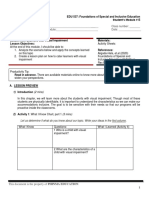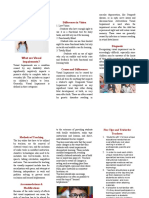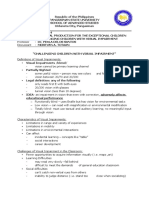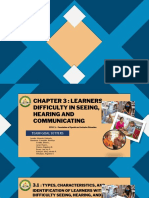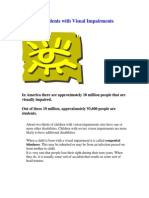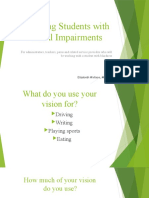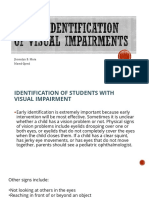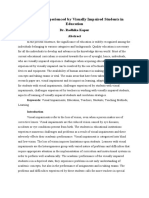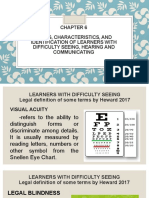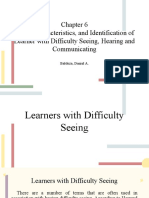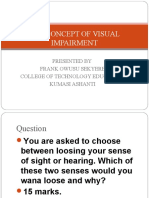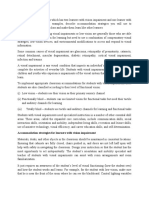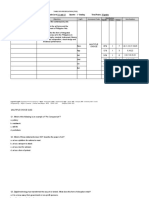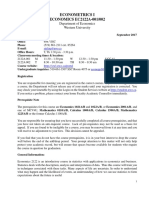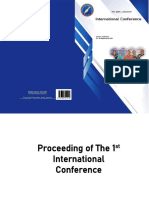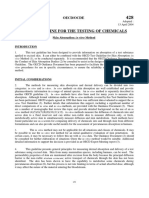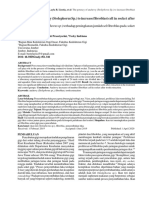0% found this document useful (0 votes)
109 views9 pagesEduc5 Module4 Lesson3
This document discusses visual impairments and how to support learners with difficulty seeing. It defines visual impairment as any loss of ability to gather visual information. The main types are discussed as refractive errors like myopia, hyperopia, and astigmatism, as well as color blindness. Causes can be genetic, injuries, diseases, or nutritional deficiencies. Guidelines are provided for classroom practices that support visually impaired learners, such as verbal instructions, allowing extra materials, and encouraging independence and socialization. Teachers are advised to work with special education teachers to modify activities and lessons to enable full participation of visually impaired students.
Uploaded by
Nj LangurayanCopyright
© © All Rights Reserved
We take content rights seriously. If you suspect this is your content, claim it here.
Available Formats
Download as PDF, TXT or read online on Scribd
0% found this document useful (0 votes)
109 views9 pagesEduc5 Module4 Lesson3
This document discusses visual impairments and how to support learners with difficulty seeing. It defines visual impairment as any loss of ability to gather visual information. The main types are discussed as refractive errors like myopia, hyperopia, and astigmatism, as well as color blindness. Causes can be genetic, injuries, diseases, or nutritional deficiencies. Guidelines are provided for classroom practices that support visually impaired learners, such as verbal instructions, allowing extra materials, and encouraging independence and socialization. Teachers are advised to work with special education teachers to modify activities and lessons to enable full participation of visually impaired students.
Uploaded by
Nj LangurayanCopyright
© © All Rights Reserved
We take content rights seriously. If you suspect this is your content, claim it here.
Available Formats
Download as PDF, TXT or read online on Scribd
/ 9

